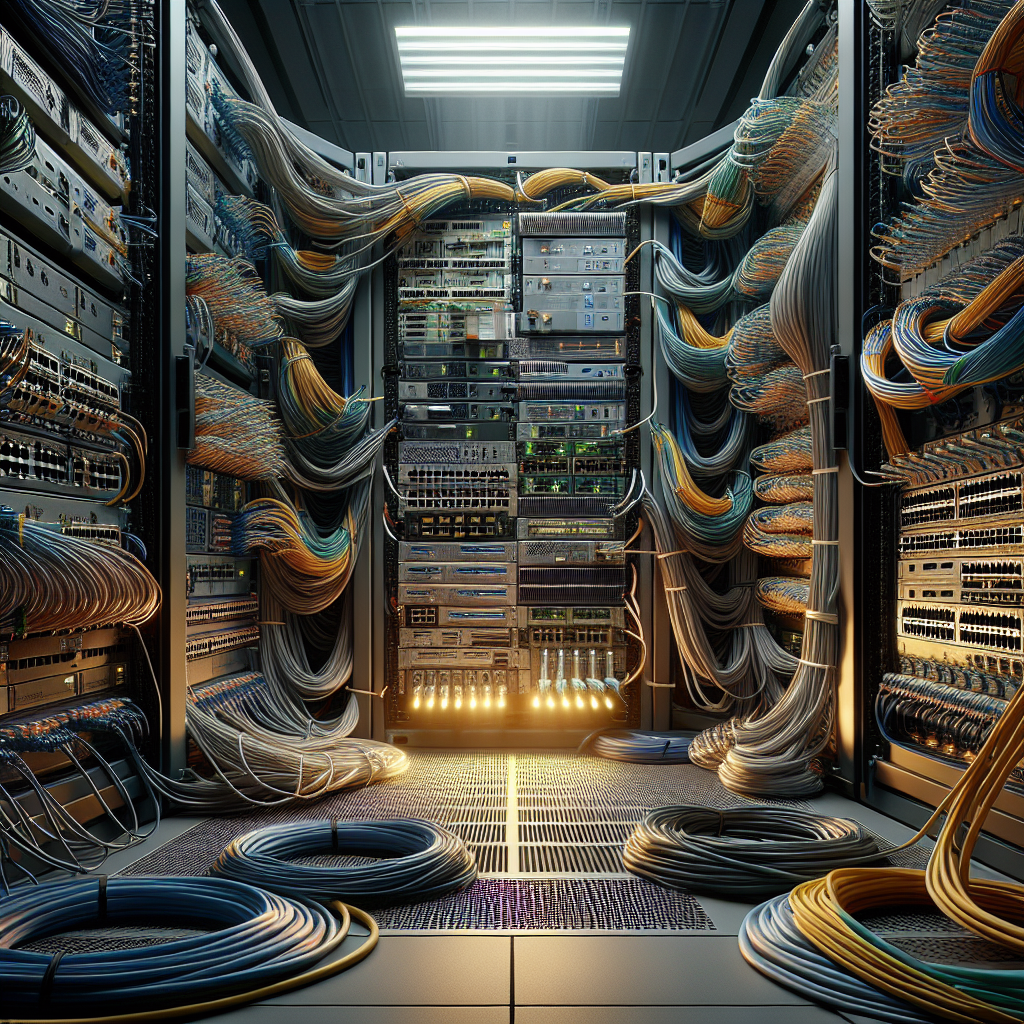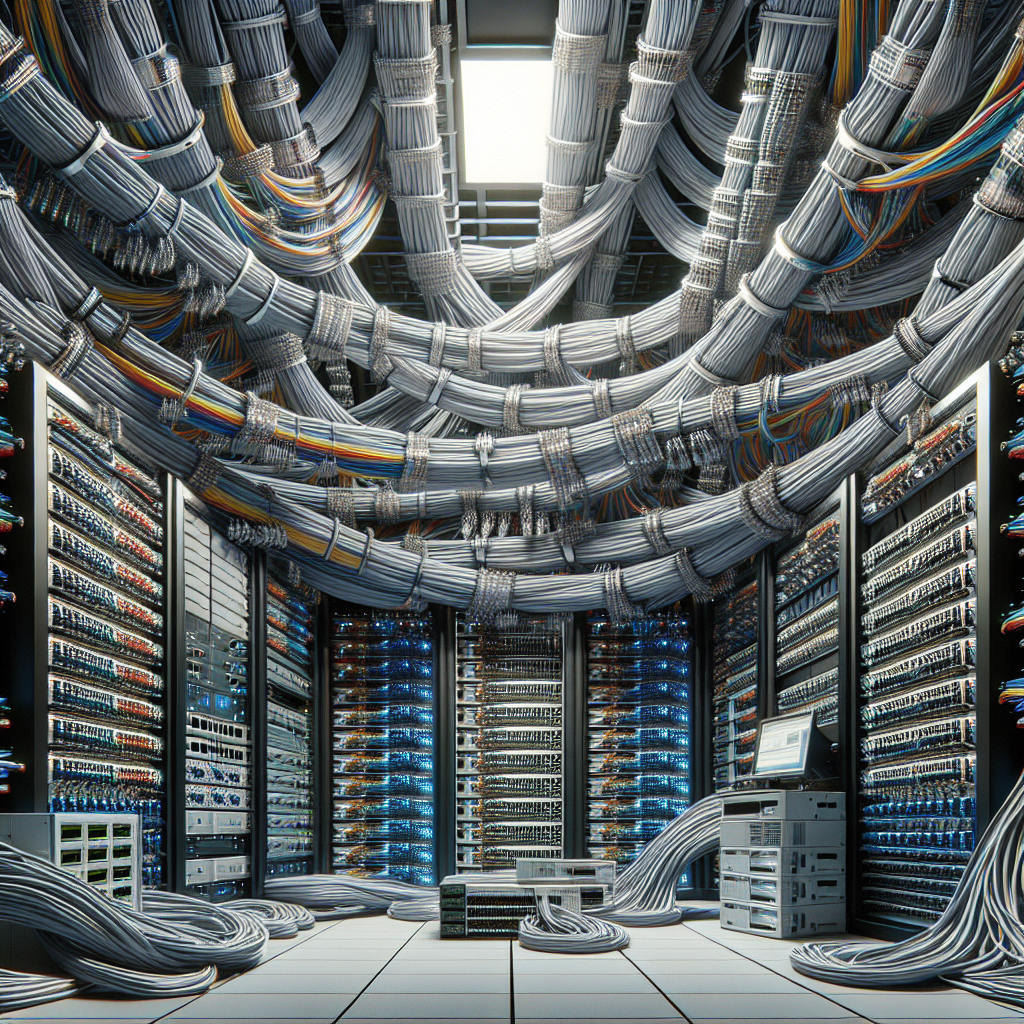When setting up a network for your home or office, one of the primary considerations is understanding where is the network cable located. Properly identifying the pathway and location of network cables is crucial for efficiency, troubleshooting, and future upgrades. Typically, network cables are run through walls, ceilings, floors, and conduits to connect various devices and ensure a secure and reliable network infrastructure.
Network cables may be found entering your home or building via a main distribution frame (MDF) which is often located in a basement, garage, or utility closet. From there, cables usually branch out to different rooms or areas through an intermediate distribution frame (IDF). In office settings, cables are commonly managed in dedicated server rooms or network closets, with clear labeling to facilitate easy identification.
It’s essential to have a well-organized network cable layout to minimize downtime and potential damage. Whether you’re looking to find existing network cables or plan a new installation, having a clear understanding of the infrastructure is the first step to success. Visit our website to learn more and get started today! Click here.
Knowing the specifics of your network’s cable infrastructure can save you time and money, especially when it comes to expansions or repairs. Professional installation ensures that your network cables are not only located appropriately but also meet industry standards for performance and safety.
Common Locations for Network Cables in Buildings
In both residential and commercial buildings, network cables are strategically placed to provide the best connectivity while remaining unobtrusive. In homes, it’s common to find network cables running along baseboards, within walls, or through attics and basements. These cables often terminate in RJ45 wall sockets located in living rooms, home offices, and bedrooms, allowing for direct wired connections to devices.
Commercial buildings, on the other hand, may have more complex network requirements and thus, a more intricate network cable setup. It’s typical to see network cables in office buildings run through raised flooring systems, suspended ceiling spaces, and dedicated conduits. Server rooms and telecommunications closets are hubs where these cables converge, connecting to switches, routers, and patch panels that manage and direct network traffic.
For both types of buildings, it’s important to adhere to building codes and regulations regarding network cable installations. This includes using plenum-rated cables when routing through air circulation spaces and ensuring that cables are properly shielded to prevent electromagnetic interference (EMI) that could degrade network performance.
Understanding the common locations for network cables helps in planning for efficient network setups and aids in troubleshooting any connectivity issues that may arise. Proper cable management and labeling are also key practices that facilitate maintenance and future upgrades to the network infrastructure.
Tips for Identifying Network Cable Types
Identifying the types of network cables in use is crucial for both troubleshooting and upgrades. One of the first steps is to look at the color and text printed on the cable sheath, which typically indicates the cable category and type, such as Cat5e or Cat6. The category can give you a good idea of the cable’s capabilities in terms of bandwidth and transmission speed.
Another tip is to examine the connectors at the ends of the cable. For Ethernet cables, these are usually RJ45 connectors, which can also have different standards. For instance, a connector with all gold-plated pins is likely to support higher transmission speeds. Additionally, the build of the cable can hint at its use; for example, thicker cables with more robust shielding are often employed in environments with higher potential for EMI.
Lastly, it’s helpful to understand the various standards that apply to network cables. For instance, twisted pair cables are the most common and are used typically for Ethernet connections. Coaxial cables, on the other hand, were once the standard for computer networks but are now more commonly used for cable Internet connections and video equipment. Fiber optic cables, recognizable by their glass or plastic fibers, are used for long-distance and high-performance data networking.
Being able to identify the different types of network cables is an essential skill for anyone managing a network. It ensures that the right cable is used for the right purpose, which is key to maintaining optimal network efficiency and performance.
How to Safely Access Your Network Cabling
Accessing your network cabling safely is paramount to prevent damage to the cables or hardware and to ensure personal safety. Begin by turning off power to the area where you will be working to avoid electrical shock, especially if you are dealing with cables near power sources. It’s important to use proper tools such as cable testers, crimpers, and strippers that are specifically designed for network cabling.
When tracing cables, employ a cable management system that minimizes interference with other electrical wiring. If you need to move furniture or lift ceiling tiles to access cables, do so gently to avoid dislodging or pinching the cables. Keeping a clear labeling system can greatly help in identifying the purpose and destination of each cable, reducing the need for unnecessary manipulation.
As you handle the cables, avoid excessive bending or twisting which can damage the internal wiring and impact the cable’s performance. Use appropriate cable ties to neatly organize and secure cables, but ensure not to cinch them too tightly, as this can lead to crushed or deformed cables. When running new cables, adhere to local building codes and regulations, which may dictate how and where cables can be run.
Always remember that safety is not only about preventing immediate harm but also about ensuring that the network infrastructure remains intact and operational. By following these safe handling practices, you can maintain the integrity of your network cabling and avoid costly repairs or downtime.
Troubleshooting Common Network Cable Issues
When it comes to maintaining an optimal network connection, knowing how to troubleshoot common network cable issues is essential. The first step is to identify signs of trouble, such as slow internet speeds, intermittent connectivity, or complete loss of connection. One basic but effective approach is to check whether all cables are securely plugged in and inspect for any visible damage such as cuts, frays, or kinks in the cables.
If physical inspection doesn’t reveal any issues, use a cable tester to check for continuity and to ensure that the cable is correctly wired. Crossed wires or improper terminations can cause significant network problems. For Ethernet connections, ensure that the cables do not exceed the recommended maximum length of 100 meters, as this can lead to signal degradation.
Environmental factors can also affect network cabling. Electromagnetic interference from nearby power lines, appliances, or even fluorescent lights can disrupt signals. In such cases, consider rerouting the cable or using shielded twisted-pair (STP) cables to mitigate interference. Additionally, make sure that the network cables are not tightly bundled with power cords as this can also lead to interference.
Software-related issues can sometimes mimic hardware problems. Make sure to update network adapter drivers and check the configuration settings on your network devices. If the problem persists, resetting the network hardware, including switches, routers, and modems, can sometimes resolve the issue.
While some network cable issues can be resolved with these troubleshooting steps, more complex problems may require professional expertise. Keeping an organized and well-documented network cabling system can facilitate quicker diagnostics and resolution of network cable problems.
Future-Proofing Your Network Cable Installation
As technology rapidly evolves, the demand for high-speed and reliable network connections becomes increasingly crucial. Future-proofing your network cable installation is not just a matter of convenience but a strategic investment in the longevity and scalability of your infrastructure. Opting for high-quality, Category 6 or Category 6a cables can support faster data transfer rates, which is essential for both current and emerging technologies. Additionally, these cables can handle the higher frequencies required by the latest wireless standards, such as Wi-Fi 6.
Incorporating structured cabling principles can vastly improve the scalability of your network. This approach involves segmenting the entire cabling system into manageable blocks, making it easier to upgrade and expand without disrupting the existing setup. Also, consider the utilization of fiber optic cables for sections of your network that require long-distance runs or are particularly susceptible to electromagnetic interference; fiber optics provide superior speed and reliability.
Planning for redundancy is another crucial aspect of future-proofing. By installing multiple pathways for critical connections, you ensure that your network remains operational even if one path fails. This kind of foresight is invaluable for maintaining business continuity and avoiding costly downtime.
To ensure that your network cabling infrastructure meets not only today’s standards but also those of tomorrow, stay informed about advancements in networking technology and revise your infrastructure accordingly. Regular audits of your network’s performance and capacity will highlight when it’s time to consider upgrades or expansions.
Remember that choosing the right partner for your cabling needs is paramount. Visit our website to learn more and get started today! Click here. Our team at Rapid Voice Data Solutions is dedicated to providing you with the best infrastructure wiring and equipment installed to meet your business or residential needs, now and in the future.





